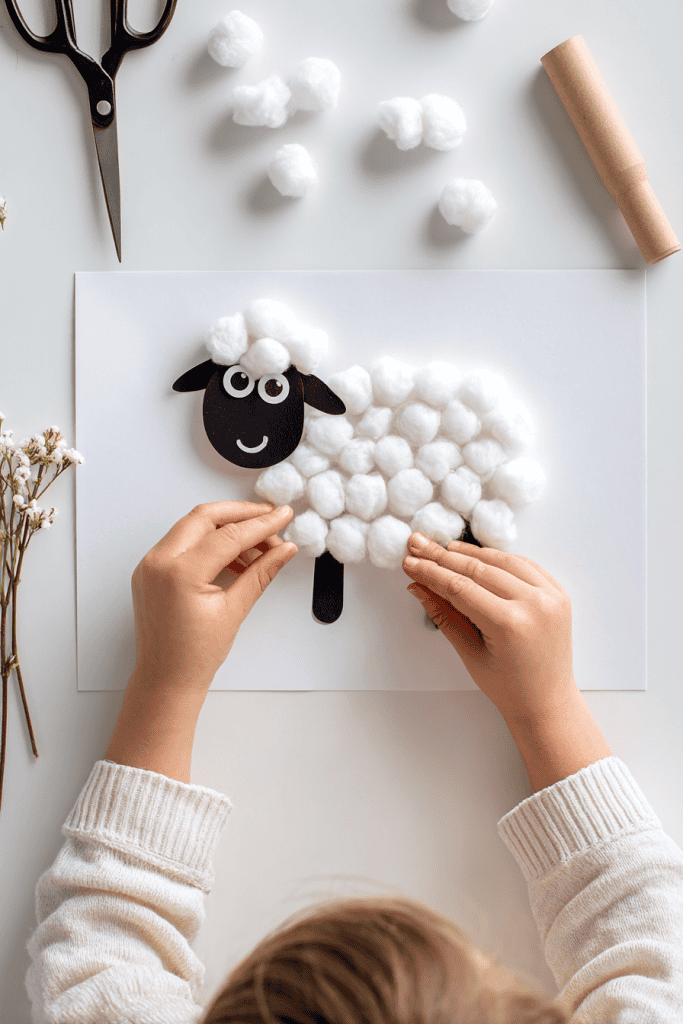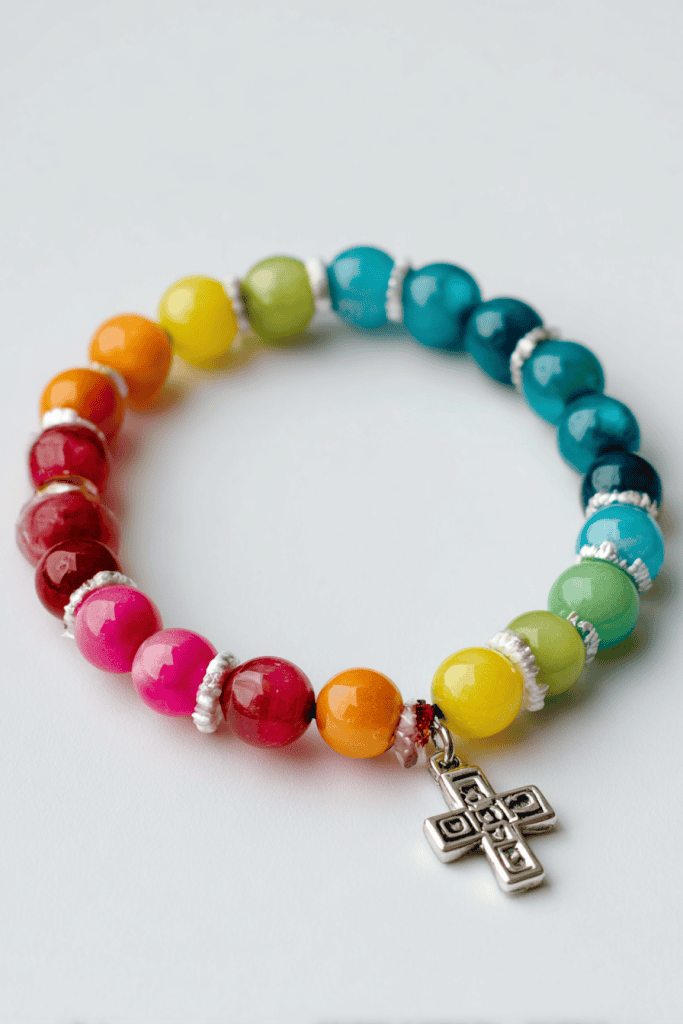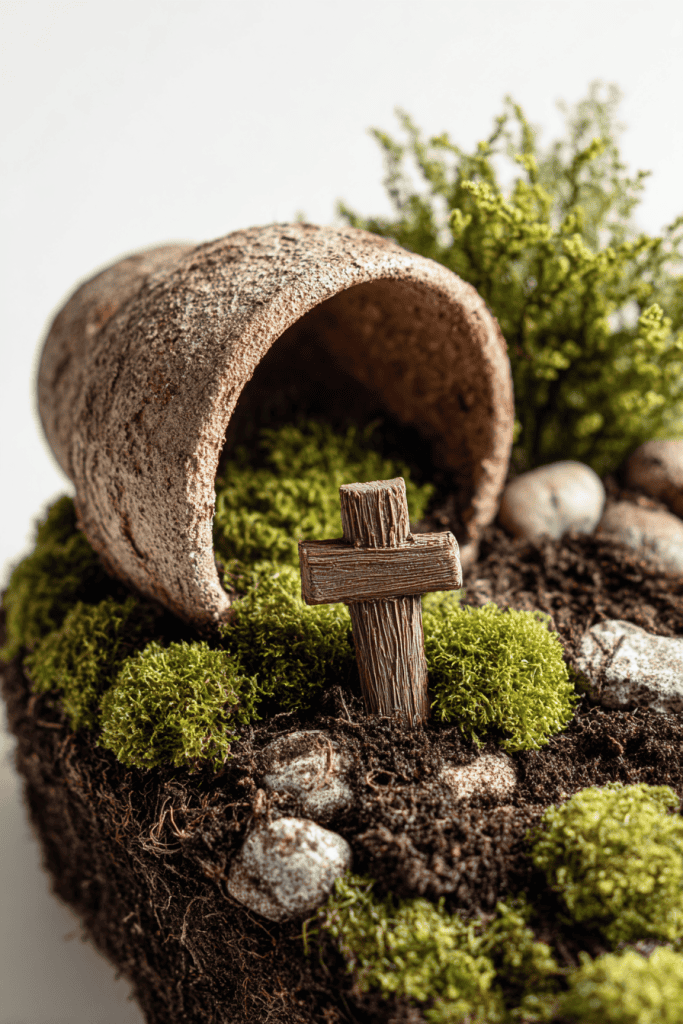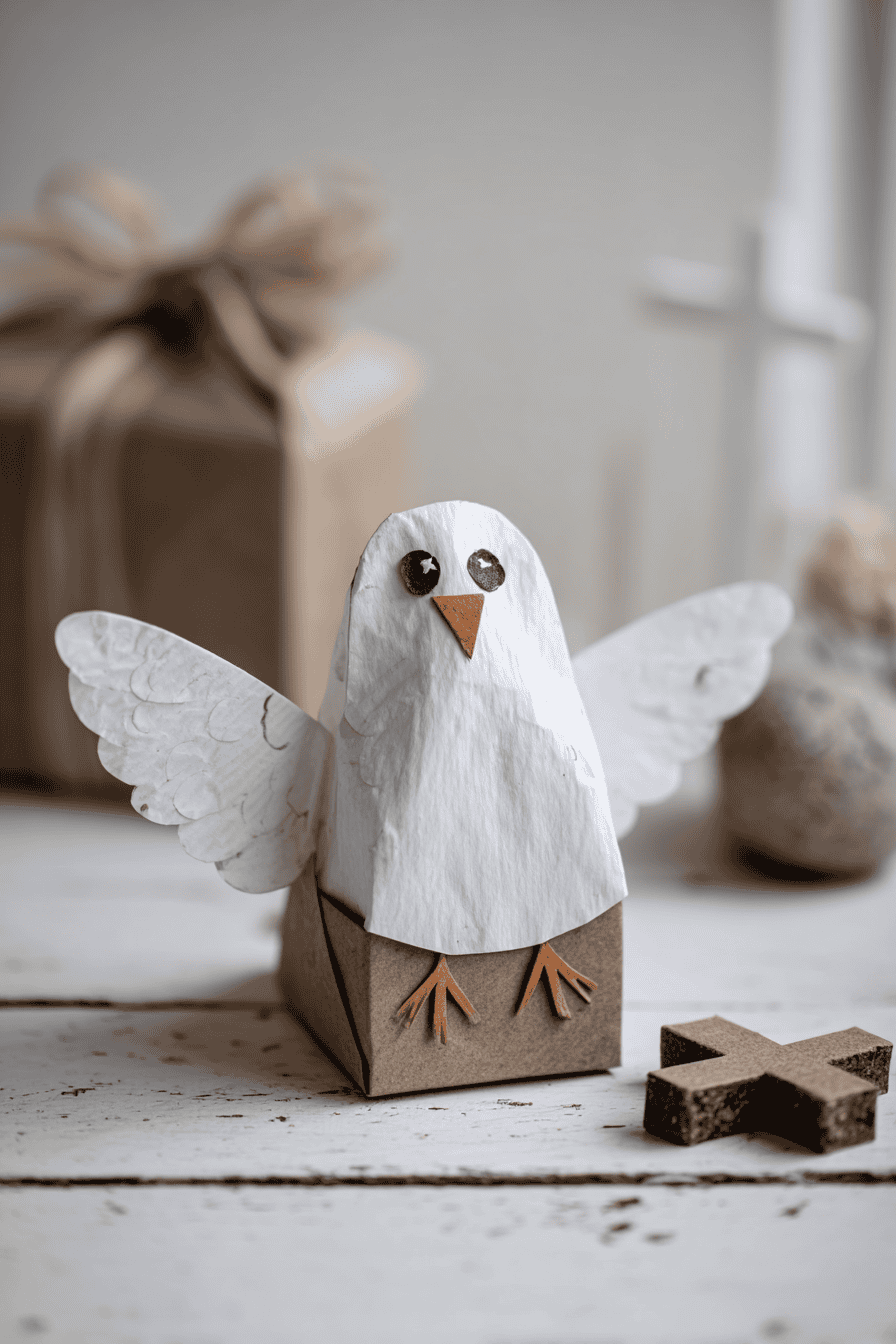Sunday School offers a meaningful space where children can learn, grow, and explore faith in ways that feel real to them.
While lessons and stories provide the foundation, hands-on activities give children the chance to connect with those lessons in a lasting way.
Crafts invite creativity, spark curiosity, and allow kids to hold something in their hands that reflects what they’ve learned in their hearts.
In this article, you’ll find twelve Sunday School crafts that are both engaging and purposeful.
Each one is simple to prepare, adaptable for different ages, and designed to highlight key truths of Scripture. Whether you’re a teacher, parent, or volunteer, these ideas will help you create moments where children can learn joyfully, express their faith, and carry home something meaningful.
Why Crafts Belong in Sunday School
Crafts are more than a way to fill time – they are an extension of learning.
When children cut, color, or shape materials, they are actively participating in the lesson rather than only listening. This physical involvement helps the message settle deeper, turning ideas into memories.
Crafting also encourages community. As children sit together at a table, they share supplies, offer encouragement, and celebrate each other’s creations. These small moments of cooperation mirror the larger message of belonging and fellowship.
Most importantly, Sunday School crafts give children a chance to make their faith tangible. A bookmark with a verse, a lantern that shines with light, or a handmade prayer jar becomes more than a project – it becomes a reminder they can take home, look at, and hold.
In this way, crafting helps connect spiritual truths with everyday life in ways children can understand and enjoy.
And if you’re looking for more inspiration beyond Sunday mornings, you might enjoy these fall craft ideas for kids that celebrate creativity and the season.
12 Best Sunday School Crafts
Crafts can transform a lesson into something memorable and practical. When children create with their hands, they are not only learning but also making a connection they can take home and revisit.
The following ideas are designed to be clear, purposeful, and adaptable for different age groups.
1. Paper Cross Mosaics

This craft combines simple materials with a meaningful message.
Begin with a sturdy cross cut from cardstock or cardboard. Provide children with colorful scraps of paper, tissue, or old magazines.
As they glue the pieces down, the cross begins to shine with unique patterns and colors.
The beauty of this project is in its symbolism – just as many small fragments come together to form one strong image, our individual lives come together in God’s greater plan.
Children can see how their “small piece” matters in creating something whole and beautiful.
Teachers can use this moment to reinforce lessons about unity, the body of Christ, or how God values each person.
It’s also practical: preparation is simple, the cost is low, and the result is vibrant enough for children to proudly display at home or on a classroom wall.
2. Prayer Jars

Prayer jars turn a basic glass or plastic container into a tool for daily reflection. Children decorate their jars with stickers, markers, or paint pens.
Then, they fill the jars with slips of paper, each holding a short prayer or a note of gratitude. Over time, the jar fills with visible evidence of faith in action.
This craft works on several levels. It teaches that prayer is ongoing – not limited to Sunday morning.
It also helps children see their prayers as something real and specific, rather than abstract.
For younger children, the jar can hold simple “thank you” notes to God for family, friends, or food. Older children can write out personal prayers or Scripture verses to revisit during the week.
The prayer jar is powerful because it goes home with the child.
Families can open the slips together at the end of the week or month, creating a moment of shared reflection.
The jar becomes more than a container; it’s a growing record of trust and thankfulness.
3. Creation Collages

A creation collage invites children to explore the wonder of God’s world through textures, colors, and images.
Begin with a large sheet of paper divided into seven sections, one for each day of creation.
Children can glue seeds, leaves, bits of fabric, magazine cutouts, or drawings that represent light, water, plants, animals, and people.
This craft works well because it is layered – children are not just hearing about creation, they are piecing it together with their own hands.
Younger children may enjoy adding cotton for clouds or glitter for stars, while older children can focus on drawing details or writing captions.
Teachers can use the collage to highlight the intentional order of creation and the goodness in each day.
Once complete, the finished work becomes a visual timeline that reinforces the story and helps children recall the sequence of God’s creative acts.
4. Bible Verse Bookmarks

Bookmarks are simple to make but carry lasting impact. Provide strips of cardstock, markers, stickers, and ribbon.
Invite children to decorate their bookmarks with a favorite Bible verse – either chosen by them or pre-selected to match the lesson.
Once finished, the bookmarks can be laminated (or simply covered with clear tape) to ensure durability.
This craft is especially effective because it gives children something they can use daily.
Each time they open a Bible or storybook, they’ll see the verse they created, strengthening memory and connection.
For younger children, teachers can print the verse ahead of time and let them focus on decorating; older children can practice writing the verse themselves.
Bookmarks also encourage a habit of returning to Scripture, making this craft not just a creative activity but also a practical tool for nurturing faith.
5. Salt Dough Scripture Ornaments

Salt dough is an easy, inexpensive medium that children enjoy working with.
With just flour, salt, and water, you can create a dough that can be shaped, cut, and baked.
For this craft, provide cookie cutters in simple shapes such as hearts, stars, or crosses.
Before baking, children can press a short Bible verse or reference into the dough with alphabet stamps.
Once hardened, the ornaments can be painted and strung with ribbon.
This project is especially meaningful because it produces something durable. Unlike paper crafts, these ornaments can last for years, becoming keepsakes that families bring out during holidays or place on shelves as reminders of faith.
The act of shaping and stamping also helps children focus on the Scripture verse, linking the words with a physical memory.
Teachers can tie this craft to lessons about God’s Word being everlasting or about remembering His promises. It’s hands-on, simple, and deeply symbolic.
6. Good Shepherd Sheep Craft

This craft brings the image of the Good Shepherd to life. Start with a simple sheep outline cut from cardstock.
Children glue cotton balls onto the body to create a fluffy sheep, then add eyes, ears, and a verse such as “The Lord is my shepherd” (Psalm 23:1).
For younger children, the focus can be on the fun of assembling the sheep. Older children can add detail by writing or decorating around the verse.
The strength of this activity lies in its clear connection to Scripture.
Children not only hear the message of God’s care – they create a sheep that represents themselves in His flock. It opens conversation about trust, guidance, and belonging.
This project also works well for group displays: a bulletin board filled with sheep can show the entire class as part of God’s family.
The craft is memorable, affordable, and adaptable for various age levels.
7. Fruit of the Spirit Bracelets

This craft turns a lesson on Galatians 5:22–23 into a creative and wearable reminder.
Provide a selection of colorful beads, each color representing one of the fruits of the Spirit: love, joy, peace, patience, kindness, goodness, faithfulness, gentleness, and self-control.
Children string the beads onto elastic cord, creating bracelets they can wear home.
The activity works on two levels. First, it is hands-on and enjoyable, allowing children to focus as they select colors and thread beads. Second, it builds an association between each color and a specific virtue.
As children wear the bracelet, they’re reminded of the fruits of the Spirit in a way that is both personal and practical.
This craft also invites discussion. Teachers can explain each “fruit” as children add it to their bracelet, reinforcing the meaning behind the colors.
The finished piece becomes more than jewelry – it’s a tool for remembering and practicing virtues daily.
8. Noah’s Ark Animal Puppets

Noah’s Ark is a story children love, and puppets bring it to life.
Using paper bags, craft sticks, or cardstock cutouts, children create simple animal puppets – pairs of lions, elephants, birds, or any animals they choose.
The puppets can then be used in storytelling, either in class or at home.
This craft encourages imagination and helps children actively participate in the story.
As they make animals in pairs, the symbolism of Noah’s Ark becomes clear.
Younger children will enjoy the playfulness of the animals, while older ones can take part in retelling the story with their puppets.
The activity works especially well in group settings. A class can divide up animals, then come together to “fill the ark” and act out the lesson.
It connects children to the biblical narrative while letting them engage in collaborative play.
9. Light of the World Lanterns

This craft is a beautiful way to illustrate Jesus’ words in John 8:12, “I am the light of the world.”
Children begin with a simple paper lantern shape – either a construction paper tube with cutout designs or a clear jar.
They decorate the outside with tissue paper, markers, or cutouts, then place a battery-operated tea light inside.
The glowing result makes the message tangible. Children see how light shines through the designs they’ve created, just as faith shines through their lives.
Teachers can emphasize the importance of carrying light into the world with kindness, joy, and service.
This project also works well for classroom displays.
A group of lanterns placed together can brighten a window or shelf, reminding everyone of the collective power of light in a community.
The craft is simple, safe, and meaningful, offering children a visual symbol they’ll remember long after the class ends.
10. Jonah and the Big Fish Craft

Jonah’s story comes alive through an interactive craft. Start with a large paper fish folded to create a pocket or envelope.
Children decorate the outside to look like a fish, then cut out a small paper figure to represent Jonah.
Jonah slips inside the fish’s mouth, making the story playful and memorable.
This craft connects directly to the lesson of trust, obedience, and God’s provision.
As children move Jonah in and out of the fish, they act out the moment of his rescue, which reinforces the message in a hands-on way.
Teachers can guide discussion around how God hears and answers prayers, even in surprising ways.
The activity is simple to prepare but highly engaging.
Younger children enjoy the movement and storytelling, while older children can add detail with verses or captions.
It’s a craft that brings both laughter and learning into the classroom.
11. Love One Another Heart Chains

This craft is a visual reminder of connection and kindness. Provide strips of construction paper in bright colors.
Children write the name of a friend, a family member, or a short verse like “Love one another” (John 13:34) on each strip.
The strips are then looped and glued into a chain.
The chain grows quickly, showing children how individual actions of love and care join together to build something larger.
Teachers can emphasize how love is not meant to stop with us – it’s meant to link us to others.
Younger children will enjoy the simplicity of making the loops, while older ones can reflect more deeply on who they choose to include in their chains.
This project also works well as a collaborative display. A class can join their chains together into one long piece, symbolizing unity and shared purpose.
12. Resurrection Garden

The resurrection garden is a living craft that ties directly to the Easter story. Each child receives a small container filled with soil.
A few pieces of moss or grass seed create greenery, and a small stone can be rolled in front of a makeshift tomb (made from a small clay pot or cup turned on its side).
This project is powerful because it grows. Children watch new life sprout over the days following Easter, reinforcing the truth of resurrection and renewal.
It connects a spiritual lesson with the natural world in a way that is easy to understand and remember.
The resurrection garden can be revisited each spring or tailored to different age groups – simple for younger children and more detailed for older ones.
Tips for Successful Craft Time
Crafts work best when they’re more than just an activity.
A little preparation and thoughtful guidance can turn craft time into a meaningful part of every lesson.
- Keep materials simple. Choose supplies that are easy to find, affordable, and safe for all ages. The focus should stay on the lesson, not on complicated steps.
- Prepare ahead. Cutting, sorting, or portioning materials before class ensures children spend more time creating and less time waiting.
- Adapt to ages. Younger children benefit from fewer steps and bigger pieces, while older children enjoy detail work and the chance to personalize their creations.
- Encourage creativity. Remind children that no two crafts need to look the same. Their unique designs reflect their individual gifts and perspectives.
- Connect conversation to the craft. Use craft time to ask questions, review the lesson, or invite children to share what they think. A simple project can open doors for deeper discussion.
Crafts are about participation, expression, and memory-making. With the right approach, each project becomes a tool for teaching and a spark for joy.
Bring These Crafts Into Your Next Sunday School Lesson
Each of these crafts is simple to prepare, meaningful to make, and memorable for children long after class ends.
By combining Scripture with creativity, you give children a way to see and touch the lessons they’ve learned, turning faith into something personal and practical.
Whether you try a prayer jar, a creation collage, or a resurrection garden, the most important part is that children feel involved, capable, and connected.
Crafts become more than activities – they become anchors for understanding and reminders of God’s love.
Which of these Sunday School crafts would you like to try first? Share your thoughts or your own favorite craft ideas in the comments below!
FAQs
1. What makes a good Sunday School craft?
A good craft is simple to prepare, easy for children to complete, and closely tied to the lesson. It should reinforce a key Scripture truth while giving kids a chance to create something meaningful they can take home.
2. How do I adapt these crafts for different age groups?
For younger children, simplify steps and provide larger pieces to handle. For older children, allow more detail, personalization, or writing opportunities. Always aim for balance between guidance and creative freedom.
3. What supplies should I keep on hand for Sunday School crafts?
Basic items like cardstock, crayons, markers, scissors, glue, and tape go a long way. Adding extras such as beads, tissue paper, or cotton balls can open up more creative options without becoming costly.
4. How can I make craft time more meaningful?
Use the time to connect the activity back to Scripture. Ask open-ended questions, invite children to share their thoughts, and remind them how their craft reflects the lesson. This turns craft time into both creativity and conversation.
5. Can these crafts be used outside of Sunday School?
Yes. These ideas work well in homeschool settings, family devotionals, or children’s ministry events. They are flexible and easy to adapt, making them valuable for any setting where kids learn about faith.

